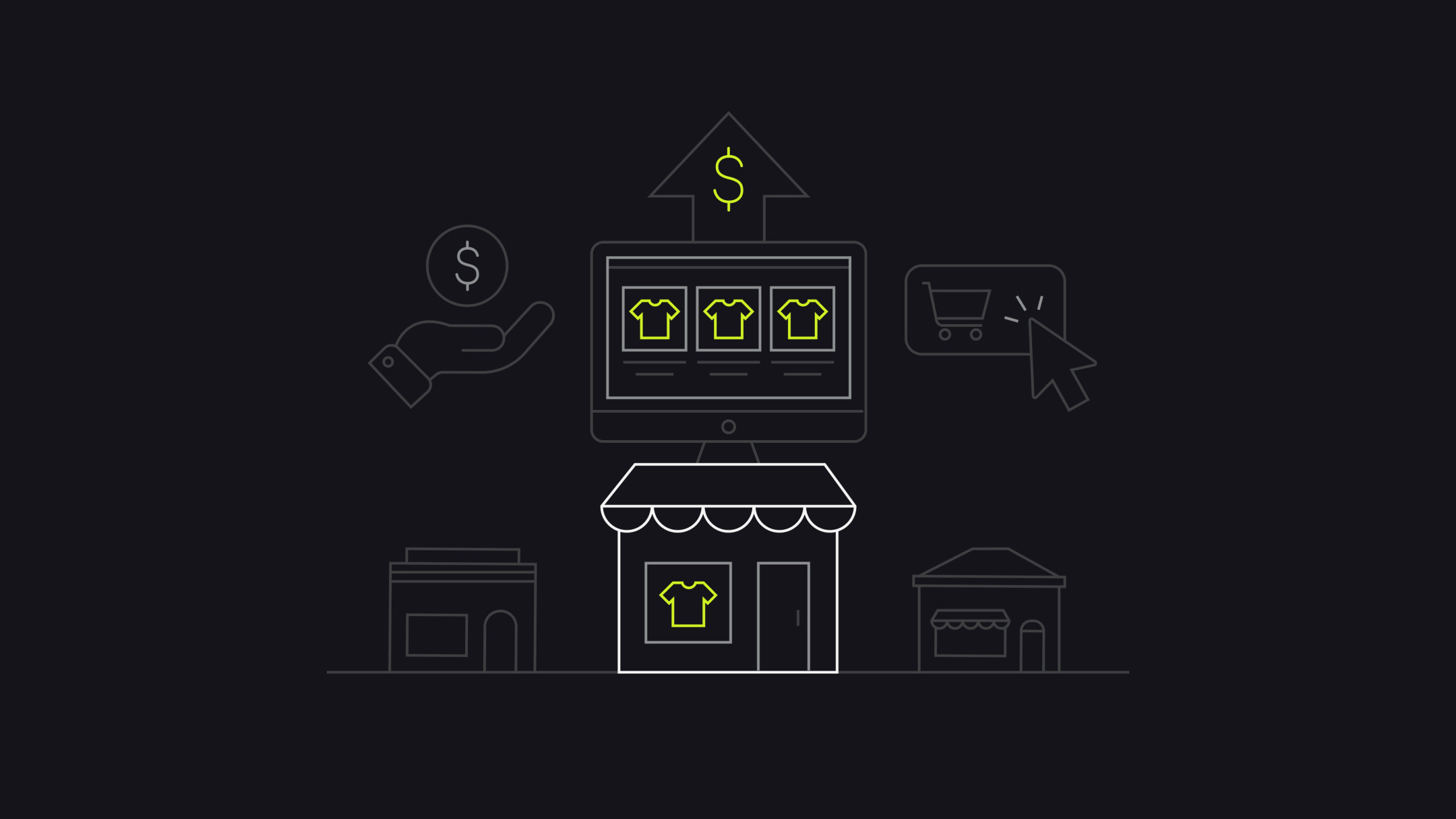As the retail landscape continues to evolve in 2021, brands are looking for ways to reach and convert more customers. To adequately fuel growth, brands need capital for investment. Increasingly, private equity and venture capital firms are becoming more active in commerce investments.
CB Insights reported in early 2019 that DTC brands received a cumulative $3 billion in venture capital funds since 2012—$1 billion of that was allocated in 2018. Some standout investments in 2020 included Clove, Silk and Sonder, and Cake that raised $1.9 million, $3.6 million and $1.4 million respectively.
DTC brands raised a cumulative $3 billion in venture capital funds between 2012 and 2019, and have since have raised $8 billion to $10 billion in known venture capital across more than 600 deals since the start of 2019, according to Crunchbase data.
Ecommerce brand investments occur at all stages of growth. Recent startup raises include Clove raising $1.9 million, Silk and Sonder raising $3.6 million, and Cake raising $1.4 million. As brands scale, those investments increase, with Once Upon a Farm raising $32 million, MeUndies raising $48.9 million, and Allbirds raising over $200M since 2016.
So how are ecommerce brands attracting and securing investment?
Understanding the investment landscape
Fundamentally, investors seek to generate a positive return on financial investments. Unlike debt financing, investors secure an equity stake in the companies they choose to back. It’s worth understanding some of the terminology:
- Venture capital: Typically, venture capital firms invest in earlier stage businesses. This may be a differentiated idea (pre-seed), demonstrated product-market fit (seed), or are in the beginnings of exponential growth. VC firms often accept a higher level of risk, invest a minority stake while providing advice and expertise to mature the business. These firms generally aim for 10x returns.
- Private equity: Generally, private equity firms will invest in more mature or even declining business stage companies with the goal of increasing top-line (through more products, marketing, or innovation) and/or decreasing bottomline (through efficiencies and shedding debt). Depending on the opportunity, they can opt for a minority or majority stake and, similar to venture capital firms, provide advice and expertise to steer the business toward performance improvement. These firms generally aim for 2-5x returns. As an example, Retail Ecommerce Ventures acquired Dressbarn in late 2020 and completely rebooted it as a direct-to-consumer operation.
Ecommerce investors make decisions that balance the expected return against the potential risks, and define a time frame—often several years or more—in which they expect to generate a return.
Savvy investors provide more than cash: They also provide expertise and advice, either from members of their own team, or from experts in their portfolio or broader network.
Defining the need for investment
Sure, more money is always great, but it’s important that a brand has a clear and compelling vision and can articulate why funds are needed and how they will be allocated. Often, brands will map out annual or multi-annual goals, identifying different scenarios (low, mid, and high cases). As part of this, the requirements of people, processes, technologies, marketing, and operational costs will be defined and where there’s a gap between what can be generated organically vs. what’s required to achieve a higher case - identifies an opportunity for capital.
Founded by husband-and-wife team Natalie Holloway and Max Kislevitz, Bala Bangles believes beautiful, functional fitness accessories will change the way people move. Bala is a weighted bangle used in cardio exercises, and gained traction immediately. The rapid growth prompted the founders to explore funding options, so they applied for, and were accepted, to pitch on Shark Tank.

“You need to understand the why of investment—know how much you need, and how you plan to use it. Equity is the most important thing you own, so it’s important that your investors share your vision of what the business can become,” said Max Kislevitz.
The company raised $900,000 from billionaire investor Mark Cuban and tennis-great-turned-investor Maria Sharapova, using the funds to accelerate their marketing efforts and expand their product range to include exercise bars and rings, and expand retail distribution in Nordstrom, Bloomingdales, and Dicks Sporting Goods. The founders note that beyond the cash investment, investors bring many more opportunities, from introductions to potential partners, to advising on key business decisions and helping connect founders to founders within their portfolios.
Pitching on a TV show is a unique and high profile experience, but there are many other ways that brands can find potential investors: angel groups, business associations, community incubators, accelerator programs, and of course using tools like Linkedin and Crunchbase to find existing network opportunities through.
How do investors determine if an opportunity is meaningful? Each firm has developed its own approach, processes, and criteria, but some fundamentals apply in all cases.
Traction
The investor will seek to understand the revenue potential of the investment. This will include due diligence on performance to date, but more importantly, seek to quantify what the mid- and long-term potential could be. This involves understanding how unique the offering is:
- Is it competitive?
- Is it defensible?
- Is there a significant potential audience?
- Does the company have a plan to grow?
- How are sales?
- What is the current and future growth rate?
Bala worked carefully to take a quantitative and data-informed approach to their business, so that when they pitched on Shark Tank they were able to explain the current state of their business, and its potential in a clear and compelling way.
“Knowing the economics is critical. If you are running a growing company and you don't know the economics of it, then it's going to be hard to trust that my investment will be put to work the right way. There was no doubt that Max and Natalie had a strong grasp on all of their numbers,” said Mark Cuban.
Operations
Historical data will be analyzed, but investors will also seek to understand the function and math here; what is the lifetime value (LTV) of a customer? What is the customer acquisition cost (CAC)? How do these vary by channel and what efforts have been made to improve the ratio? What additional costs will be necessary to achieve future revenues? Does the company have a clear plan that allows for profitable growth? Does every dollar spent drive a positive return?
Since its launch in 2013, Boll & Branch has become a leading maker of luxury organic bedding and bathroom products. With a focus on organic products and transparency in its supply chain, the brand has built a robust business that has seen massive growth. In late 2020, it raised $100 million from L Catterton, a private equity firm that invests across multiple categories.

“Planning for this investment round and doing the due diligence was an additional kick in the butt to get our data in order, refining attribution, modeling our cohorts, gaining more clarity on KPIs and what drives improvement and success,” said Katia Unlu, SVP Digital, Boll & Branch.
“Brands that are scaling do so by understanding their fundamentals and staying focused. The executive team must know the brand’s value, and why customers are coming to you, and then enhance and optimize that. When brands focus on their unique strengths, the competition weakens and the brand can grab even more opportunities to grow,” said Bhavan Shah, Principal, L Catterton Portfolio Operations.
Boll & Branch used this investment to significantly grow its team, building more capabilities in acquisition marketing, cross-sell and up-sell, loyalty, and retention marketing, while also expanding distribution channels including its own retail locations and wholesale agreements with leading retailers.
Team
Investors will want to get to know the founding and leadership team, and expect frank and honest conversations about strengths and weaknesses. Capability gaps are fine, and investors welcome companies that are open about these and outline plans to hire capable, diverse, and effective team members. Investors can help introduce new employees, potential partners, and others within their network.
Founded by sisters Taran and Bunny Ghatrora, Vancouver-based Blume launched in June 2018, selling organic cotton tampons and pads, and has since expanded to offer skincare and body products, via subscription or one-off sales. Blume is proud of its values and its mission to de-stigmatize periods and create the next generation of confident, tenacious, and conscious women.

In early 2019, Blume raised $3.3 million in seed funding from Grace Chou and Victoria Treyger, partners at Felicis Ventures, with participation from Victress Capital, Panache and Eric Ries. This funding helped the business stabilize cash flow during its fastest growth, but Taran notes how much more the investment has brought:
“Our investors have made amazing introductions, including retailers to expand our distribution, and marketing partners to grow our customer base, said Taran Ghatrora, CEO and co-founder of Blume. “They’re available when we need them, helping us think through strategic decisions, hiring and connecting us to other founders in their network,”
Technology
Investors want to know that ecommerce brands understand the technology they will need to build or integrate to achieve future goals. The most successful Shopify brands leverage multiple Shopify Plus Certified Apps, with leaders like AllBirds, ColourPop, and Dressbarn leveraging multiple apps to power everything from marketing automation and conversion optimization, to shipping solutions, returns management, customer experience, and loyalty programs.
Additionally, there are similarities between brands, for example, luxury bed linen brands may have similar customer experiences to high-end home decor, with customers wanting to browse products, see multiple photos and visualizations, understand returns policies and ask questions about the product before they purchase. Contrast this to brands that sell lower-priced but higher-volume items, like cosmetics or stationary. In this case, customers may want to read shopper reviews, see user-generated content showing the product in use, and learn about loyalty programs.
Whatever the use case suits the customers, the brand should leverage technologies that connect with Shopify Plus to build the best performing experience.
Onwards and upwards
Mark Cuban shares observations about the huge potential for direct-to-consumer brands in 2021 and beyond, as well as his key thoughts on what founders need to do to secure investment.
“We are moving digital at a faster rate than anyone expected and people have really gotten used to the convenience… Know what you are good at and what you suck at. Get help, people that are smarter than you to help you, and where you can't get the help you need, dig in and put in the hours to learn it yourself.”
The shift in consumer habits presents a great opportunity for founders to launch direct-to-consumer brands, but growing fast requires many components: building a capable team, investing in technology, conducting robust marketing. To truly scale for growth, brands are looking to investors to provide capital and advice.
The fundamentals that investors seek remain the same; they’re looking for companies that have identified a niche of the market that they can serve better than anyone else, and have a clear vision for future growth. They want to know that the leadership team understands the economic fundamentals and has a clear plan ahead: Does the company know which channels and tactics are most effective? Will that be expanding its product offering? Tapping into new international markets? Changing the nature of delivery, such as moving to a subscription model or selling via wholesale channels.
By understanding the types of investment available, and the steps involved in securing investments, brands will be better positioned to succeed.
Ecommerce Investors FAQ
How do I find investors for ecommerce?
- Use online networks and forums: Look for online networks and forums where investors and entrepreneurs interested in ecommerce come together. These may be online discussion boards, message boards, and other websites where entrepreneurs can post their ecommerce business ideas and connect with potential investors.
- Join business events: Attend business events and conferences related to ecommerce and entrepreneurship. These events can be great opportunities to meet potential investors and make connections.
- Network: Networking is one of the best ways to find investors for ecommerce businesses. Reach out to people who are already successful in the ecommerce industry and ask them for referrals to potential investors.
- Use crowdfunding platforms: Crowdfunding platforms like Kickstarter, Indiegogo, and GoFundMe are great ways to get funding for ecommerce businesses. These platforms allow entrepreneurs to create campaigns to raise money for their businesses.
- Pitch to venture capitalists: Venture capitalists are typically experienced investors who invest in high-growth businesses. Reach out to venture capitalists who specialize in ecommerce investments and pitch your business idea.
What is investing in ecommerce?
Investing in ecommerce is investing in businesses that are involved in buying, selling, marketing, and delivering products or services over the internet. This type of investing involves buying stocks, bonds, and other securities related to companies involved in ecommerce. In addition, investors may also invest in venture capital funds and other financial products related to ecommerce businesses.
How much do I need to invest in e-commerce?
The amount you need to invest in e-commerce depends on your goals and the products or services you plan to sell. You may need to invest in a website or shopping cart solution, for example, or to hire additional personnel. You may also need to invest in marketing tools and services to help promote your offerings. Ultimately, the amount you need to invest will depend on the size and scope of your business and the amount of capital you have available.
How can I raise money for my ecommerce business?
- Crowdfunding: Platforms like Kickstarter and Indiegogo can be great resources for raising money for an ecommerce business.
- Angel Investors: Reach out to angel investors who are willing to invest in promising ecommerce startups.
- Online Lenders: Online lenders such as Kabbage, Fundbox, and OnDeck can provide short-term loans and lines of credit.
- Venture Capital: Pitch your business to venture capitalists and other investors who may be interested in investing in your startup.
- Bank Loans: Traditional bank loans can also be a great option for raising money for an ecommerce business.
- Grants: Look for grants or other funding opportunities from government agencies, nonprofit organizations, and other sources.






